Grilled prime rib and chateaubriand are the two cuts of beef that immediately come to mind when you think about fine dining. This prime rib on the grill recipe is perfect for the holidays and makes a great dish for a dinner party when you want to impress.
Many love the lean tenderness of the chateaubriand. Others (like me) prefer the big flavor that comes from the more fatty prime rib roast, and this dry brined grilled prime rib doesn’t disappoint.
Jump to RecipeWhat’s Better, Boneless Prime Rib or Bone-in Prime Rib?
There isn’t a textbook right or wrong answer to that question. This is more of a personal choice and there are pros and cons to both. What’s far more important is the quality of the beef, and how it’s prepared.
Back to the question about boneless or bone-in. For a better understanding of the differences between the two, see my blog here.
As I’ve said many times, don’t get caught up in the commonly handed-down misconception that the bone adds flavor to an entire piece of meat. It’s simply not true and my blog about this will explain it in greater detail. I highly encourage you to give it a read.
Having said that, there are other reasons to choose bone-in for your prime rib on the grill.
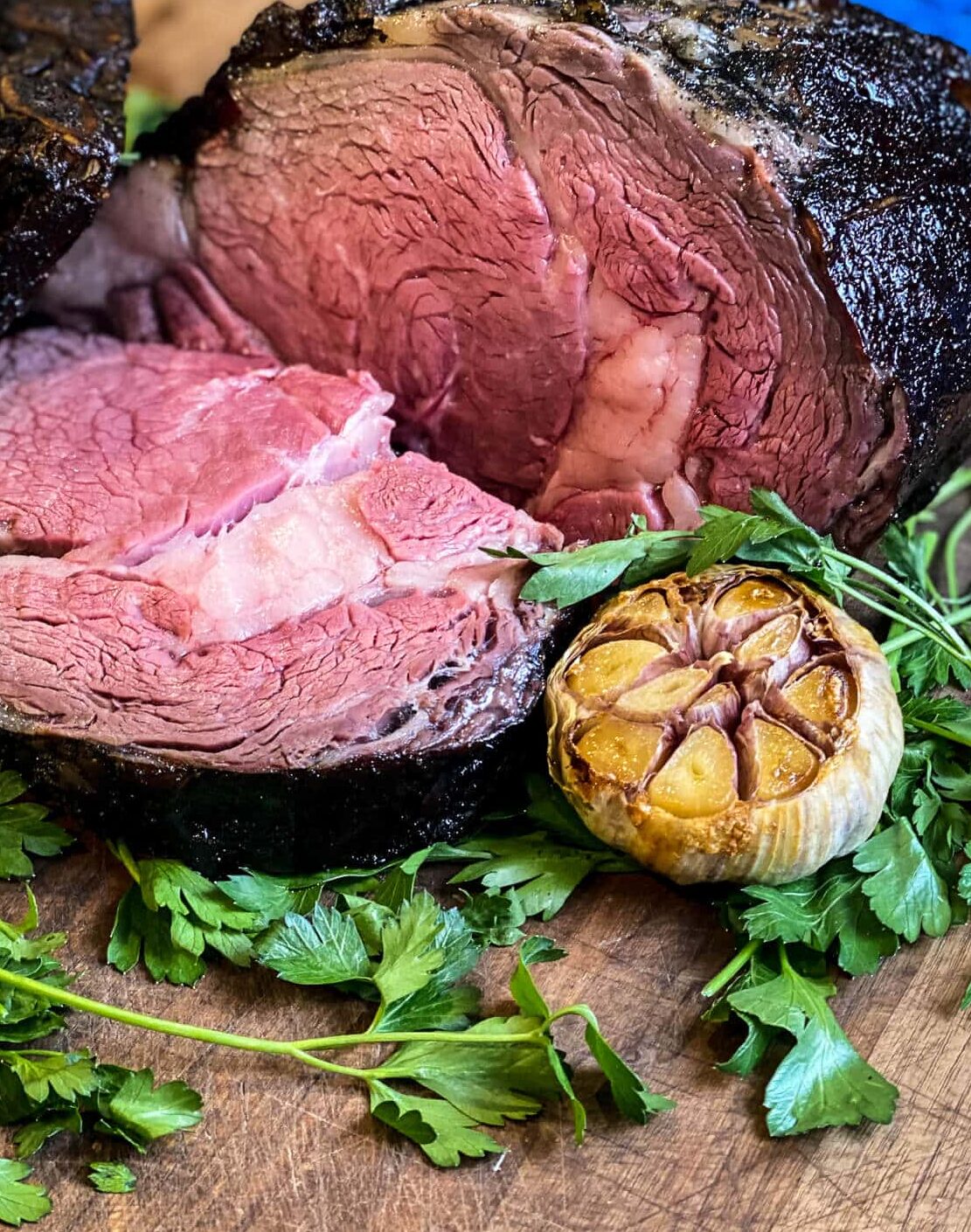
First, the bones act as a bit of a heat barrier when making grilled prime rib. This helps prevent an oblong-shaped piece of meat from cooking unevenly.
Second, that meat right around the bones is excellent, some of the best on the roast, even. So don’t be afraid to get messy knaw away at them.
Finally, these bones make for excellent beef stock. Much like my seafood stock, I save beef bones and freeze them until I have enough to make homemade beef stock that I use for a number of things, like the au jus for this grilled prime rib roast.
How to Prepare a Prime Rib For The Grill
Preparing your roast for some incredible grilled prime rib, and it starts early. For this roast, I am doing a 3-day dry brine like I do with other big cuts of meat like this porterhouse for two.
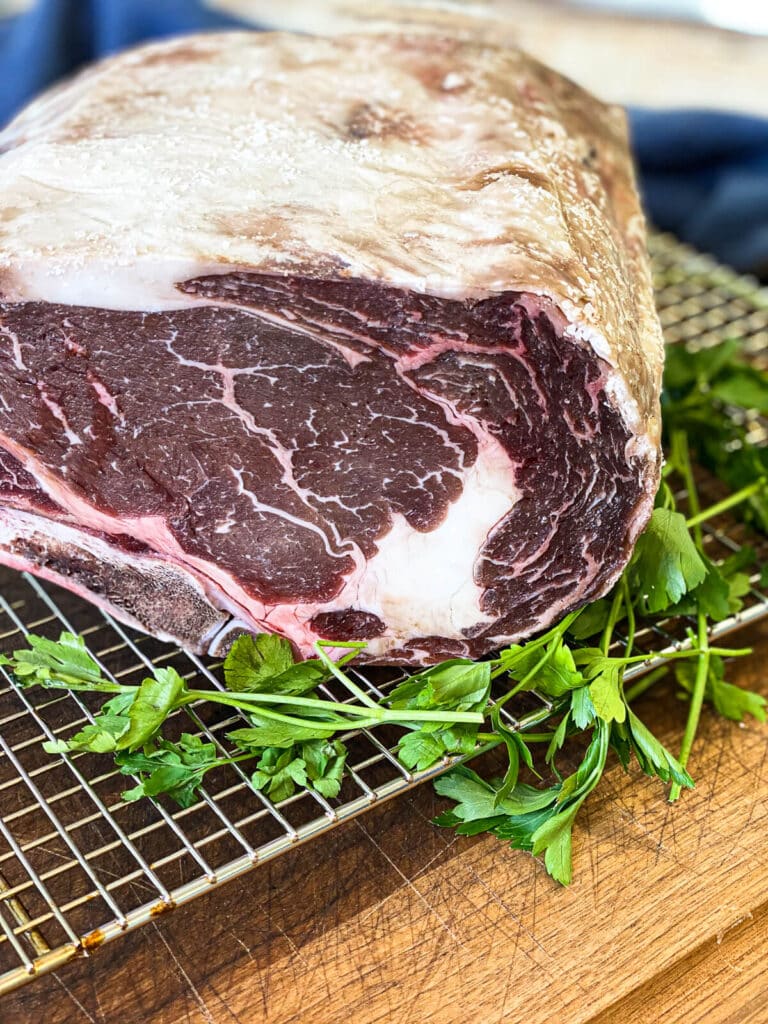
Start by placing your prime rib roast on a cooling rack, salt all surfaces of the outside of the beef, and allow it to dry in the refrigerator for 36 hours. It will take on an almost dry aged look; I can’t stress enough how much I love this technique for big cuts of beef.
The beef flavor is just amplified from the penetration of the salt during the dry brine process. So, plan ahead when you’re about to serve this amazing grilled prime rib.
Prime Rib On The Grill
Let’s talk about how we are going to grill this prime rib roast. It’s no secret I am a huge proponent of the reverse-sear method and that’s what we’ll use here. I’ve promoted this method and indirect heat on large cuts of meat for years and have blogged about it extensively.
The idea of searing first to “lock in the juices” is some of the worst information available when it comes to grilling. Unless you have a grill capable of incredibly high temperatures, this method results in uneven cooking.
Sadly, it just seems to keep being handed down by those who don’t know any better. If you’ve never tried the reverse-sear method, try it now and I promise you’ll be a believer.
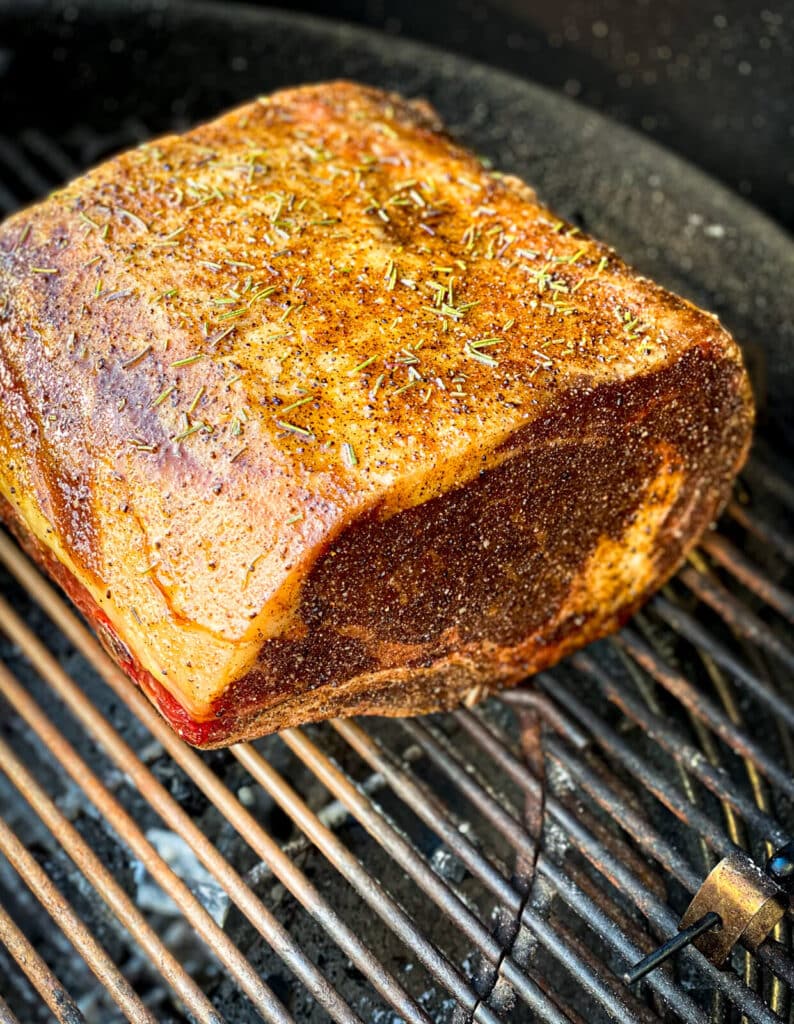
For this roast, we’ll build our fire on one side of the grill and cook the roast on the opposite side of the grill, as far from the heat source as possible. Keep the temps low (225°–235° F) and of the utmost importance, place your prime rib roast with the bones towards the fire.
Remember the first reason I told you why I prefer a bone-in roast to boneless? Placing the bones toward the fire helps ensure an even cooking process.
What Temperature Should I Cook My Prime Rib?
Among some of the worst methods I’ve seen for cooking a prime rib, is to start cooking at like 500°F. That’s usually followed by some unreasonable formula of cook time per pound of meat. I can assure you, cooking a prime rib this way will turn out a prime rib that looks like this:
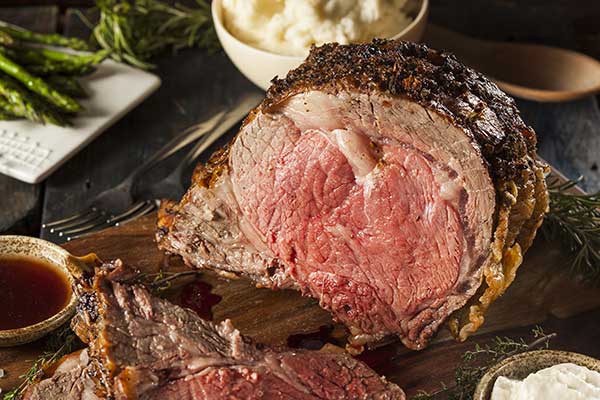
Seriously, check out social media (Instagram and Tik-Tok are full of them) and other “recipes” for prime rib and you’ll see pictures just like the above. If you’re prefer a roast that looks like the one pictured above, I’d encourage you strongly to just save the money on the prime rib and just make yourself some chicken. I kid! I’m sure it’s not the first time you’ve heard this type of joke.
The high heat for long periods of time result in the outside of the roast being well-done, fading gradually to a medium-ish center. The best piece of the prime rib (the rib cap) as you can see above, is cooked to baseball glove level.
Instead, save the extreme heat till the end, and only expose the meat to it for as short of a time as possible in order to achieve the desired crust.
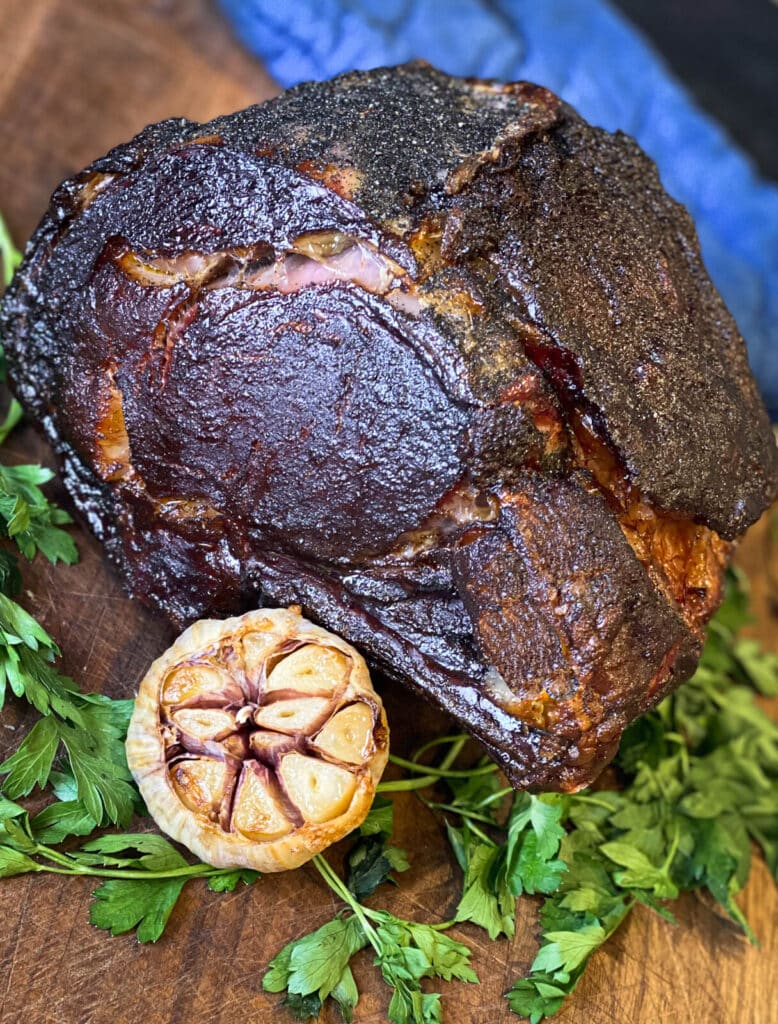
So, in summary, keep those temps low (225°F–235°F) and allow the prime rib roast to gradually and evenly come up to your desired temperature for doneness. For me, medium rare is perfect.
I Want to Grill My Prime Rib Roast but I Don’t Own a Grill, What Can I Do?
As much as I would love to see everyone using a grill for this, I recognize that’s not possible for some for a number of reasons. The great news is that even if you don’t have a grill, you can still use the reverse-sear method. Just follow my directions here for using an oven and cast-iron pan for the reverse-sear method.
Grilled Prime Rib Roast Recipe
Serves: 8-10 | Prep Time: 3 days | Cooking Time: ~2 hours
Ingredients
1 4 lb bone-in prime rib roast
3 tbsp kosher salt
2 tbsp olive oil
2 sprigs rosemary, leaves pulled from stems and coarsely chopped
Beef Rub:
3 tsp kosher salt
4 tsp ground espresso
3 tsp sugar
3 tsp granulated garlic
2 tsp onion powder
1 tsp ground black pepper
1 tsp chipotle chili pepper
How to Grill Prime Rib Roast
Step 1: Rinse your roast under cold water. Pat dry with paper towels and place roast on wire cooling rack. Salt all sides of the roast with kosher salt and place in the refrigerator for 3 days.
TIP: Place a plate under your roast in case it drips while drying.
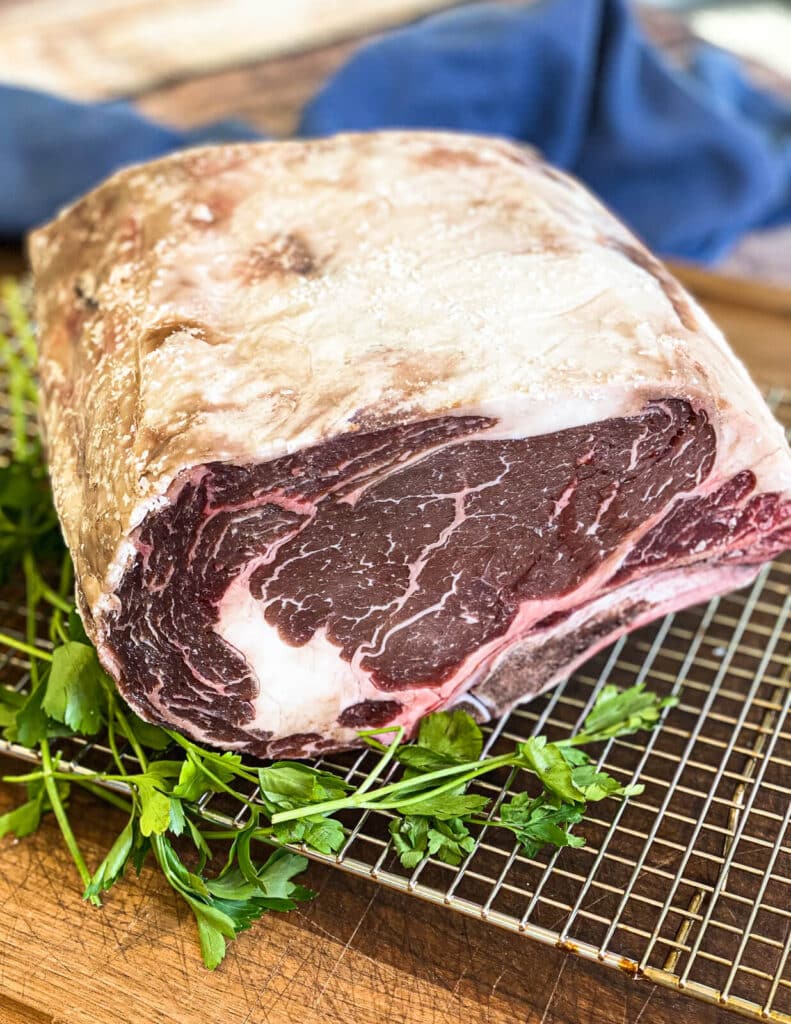
Step 2: Preheat your grill to 225°F.
Step 3: While the grill is preheating, prepare your prime rib by applying a light coat of olive oil over the entire roast. I use this spray bottle for olive oil but use what you have.
Step 4: In a mixing bowl, whisk together all ingredients for the beef rub. Apply liberally over the entire roast. On top of the beef rub, sprinkle chopped fresh rosemary. Allow roast to sit on the counter and come up towards room temperature while your grill preheats.
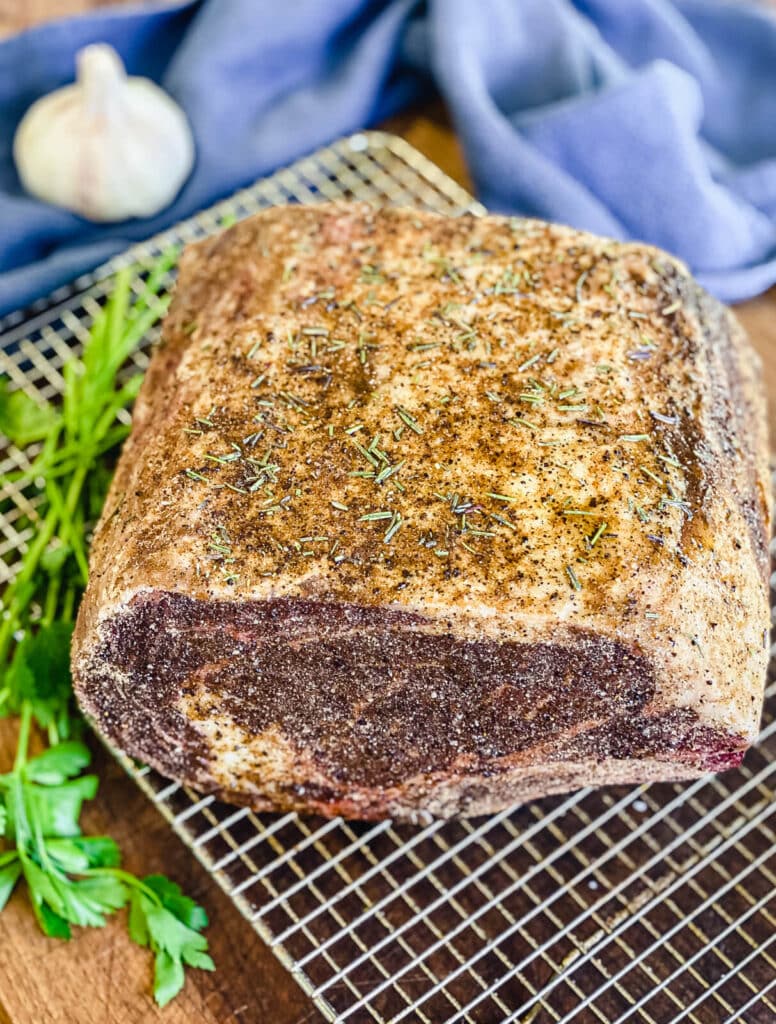
Step 5: Insert a reliable meat thermometer in the roast, place roast on grill over indirect heat, as far from the heat source as possible. Be sure to place the roast with the bones facing the heat source. I can’t stress enough the importance of using a reliable meat thermometer, it can be the difference between perfection and disaster with an expensive cut of meat. Don’t ask me how I know.
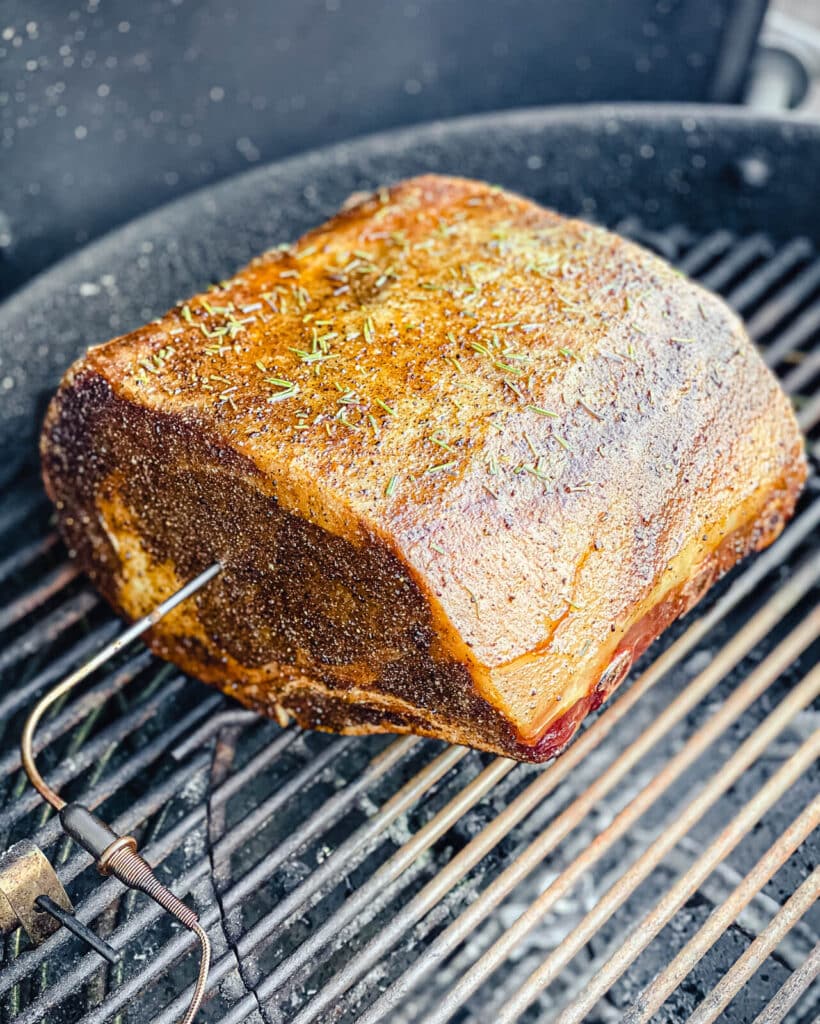
Step 6: When the internal temperature reaches 120°F (about 2 hours), remove the roast from the grill and set aside. Increase the direct-heat zone of your grill to as hot as possible.
TIP: You’ll want the direct heat or searing portion of the grill to be as hot as possible in order to sear the roast as quickly as possible. We’re only looking to induce the Maillard reaction to the crust of the beef, not cook the inside much more. For a gas grill, this simply means turning the knob to the maximum heat position. For a charcoal grill, you may need to add more charcoal. You’ll want to get the hot coals as close to the grate as possible for this.
Step 7: Place the roast directly over high heat for a total of 5 minutes, turning often to built a crust.
Step 8: Remove roast from heat, place on a cutting board, and tent with foil. Allow resting for 10–15 minutes before slicing. While resting the roast will continue to cook and will be a perfect medium rare when sliced.
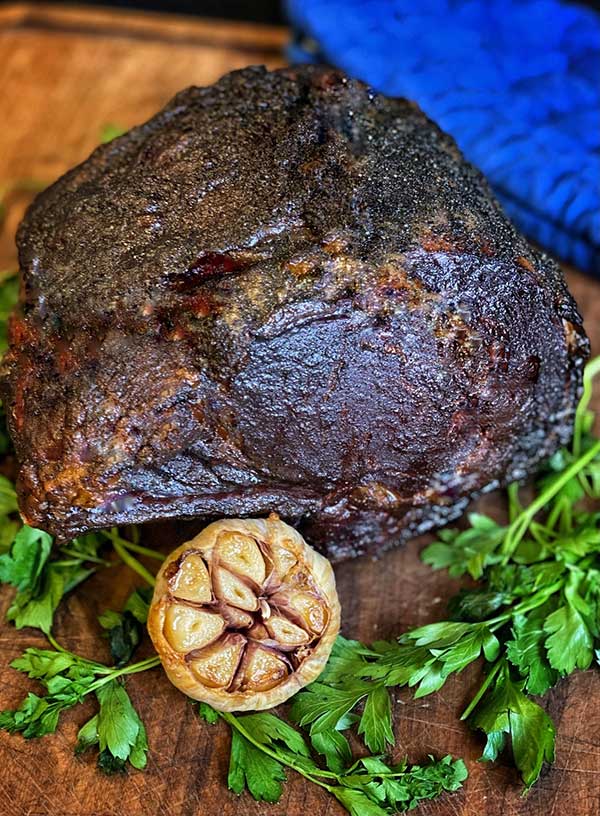
Step 9: Using a sharp knife, slice roast in 1/2 inch slices and serve with roasted garlic mashed potatoes and creamed spinach.
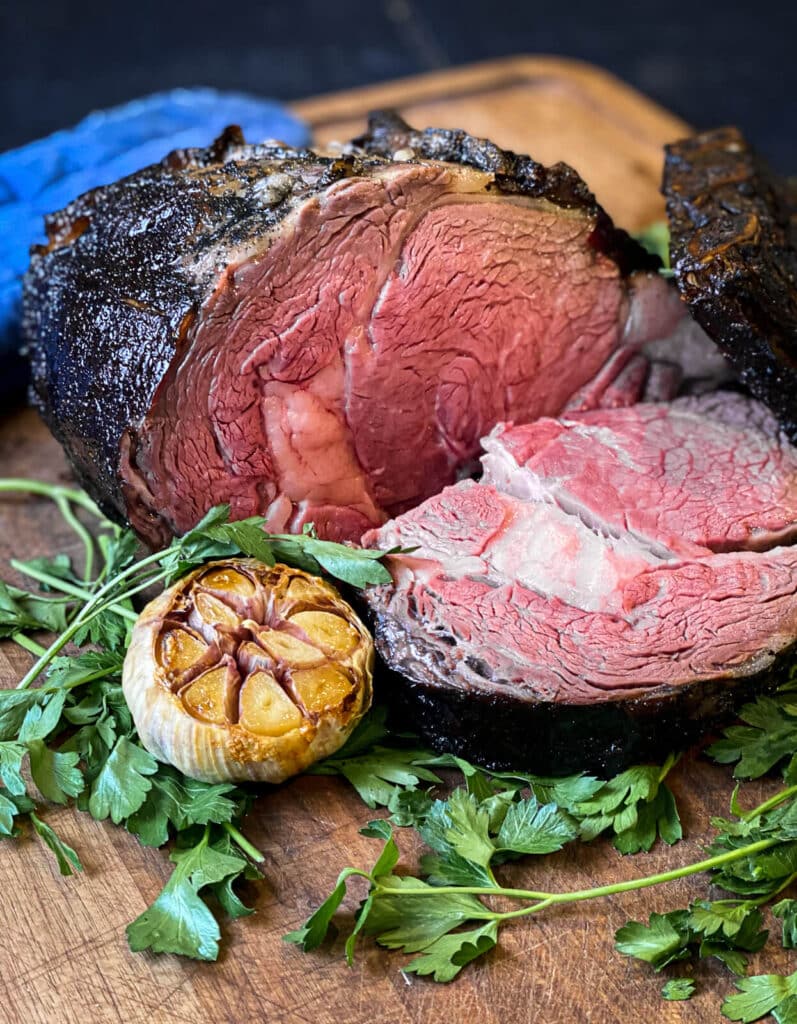
Grilled Prime Rib Roast Recipe
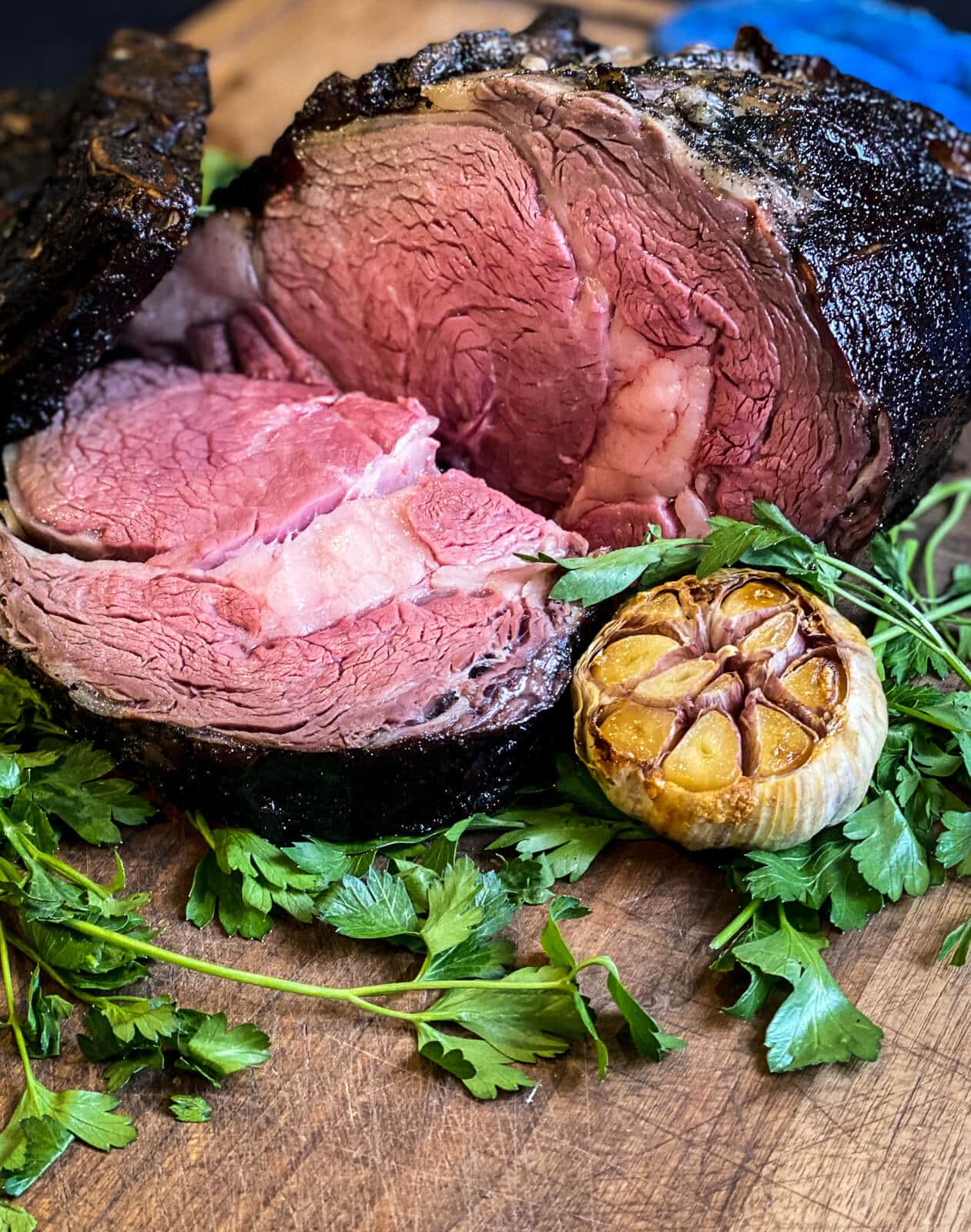
Ingredients
- 1 4 lb bone-in prime rib roast
- 3 tbsp Kosher salt
- 2 tbsp olive oil
- 2 sprigs rosemary leaves pulled from stems and coarsely chopped
Beef Rub:
- 3 tsp kosher salt
- 4 tsp ground espresso
- 3 tsp sugar
- 3 tsp granulated garlic
- 2 tsp onion powder
- 1 tsp ground black pepper
- 1 tsp chipotle chili pepper
Instructions
- Rinse your roast under cold water. Pat dry with paper towels and place roast on wire cooling rack. Salt all sides of the roast with coarse sea salt and place in the refrigerator for 3 days.
- Preheat your grill to 225°F.
- While the grill is preheating, prepare your prime rib by applying a light coat of olive oil over the entire roast.
- In a mixing bowl, whisk together all ingredients for the beef rub. Apply liberally over the entire roast. On top of the beef rub, sprinkle chopped fresh rosemary. Allow roast to sit on the counter and come up towards room temperature while your grill preheats.
- Insert a reliable meat thermometer in the roast, place roast on grill over indirect heat, as far from the heat source as possible. Be sure to place the roast with the bones facing the heat source.
- When the internal temperature reaches 120°F (about 2 hours), remove the roast from the grill and set aside. Increase the direct heat zone of your grill to as hot as possible.
- Place the roast directly over high heat for a total of 5 minutes, turning often so built a crust.
- Remove roast from heat, place on a cutting board, and tent with foil. Allow resting for 10–15 minutes before slicing.
- Using a sharp knife, slice roast in 1/2 inch slices and serve with roasted garlic mashed potatoes and creamed spinach.
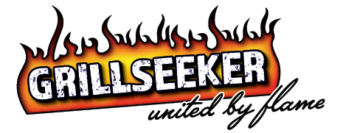

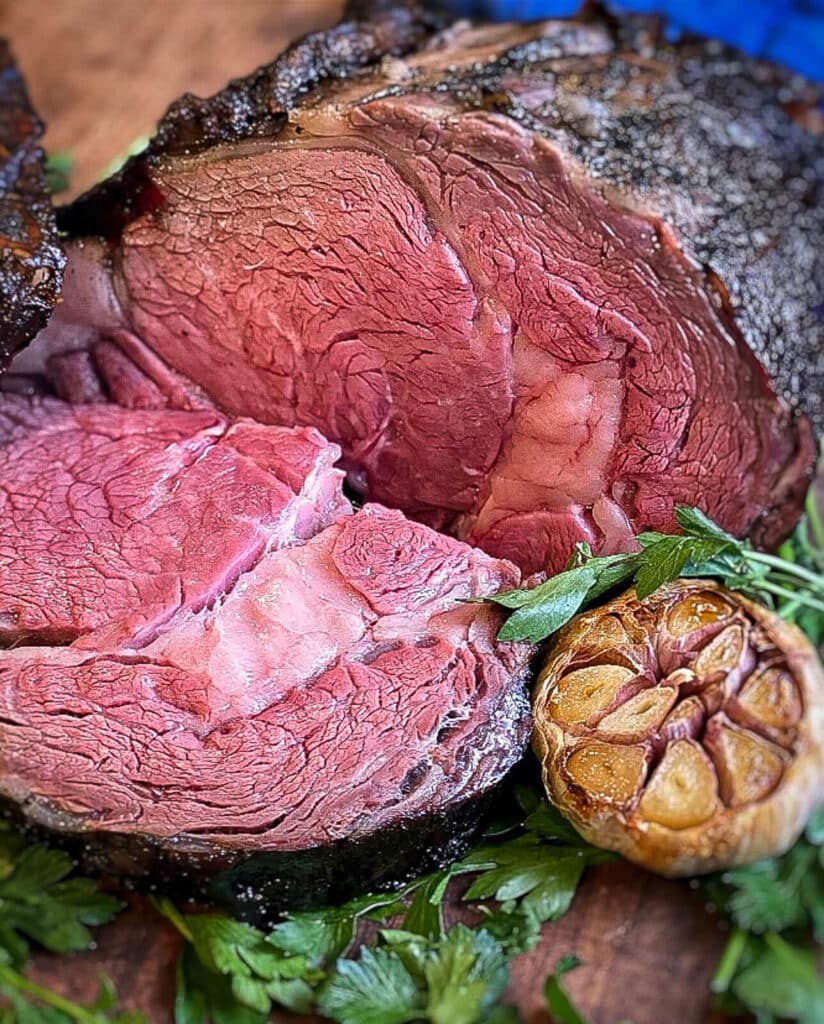
I have a 21 pound Roast that I am using an Umai Bag on to dry age for 6 weeks; just in time for Christmas. After trimming down; how long do you feel this should cook on the grill. I still have the bone but have had it detached and tied for cooking purposes. I figure that i will have about 15 lbs after drying and trimming.
Hi Kathleen, thanks for checking out the blog and good luck with your dry aged roast! I can’t answer your question about how long it will need to cook, that depends on so many things. Temperature you’re cooking at, level of doneness you’re trying to achieve, amount of intramuscular fat, and many other things. My best advice is to use a reliable leave in thermometer and monitor your meats temperature as it cooks to ensure you achieve the level of doneness YOU like.